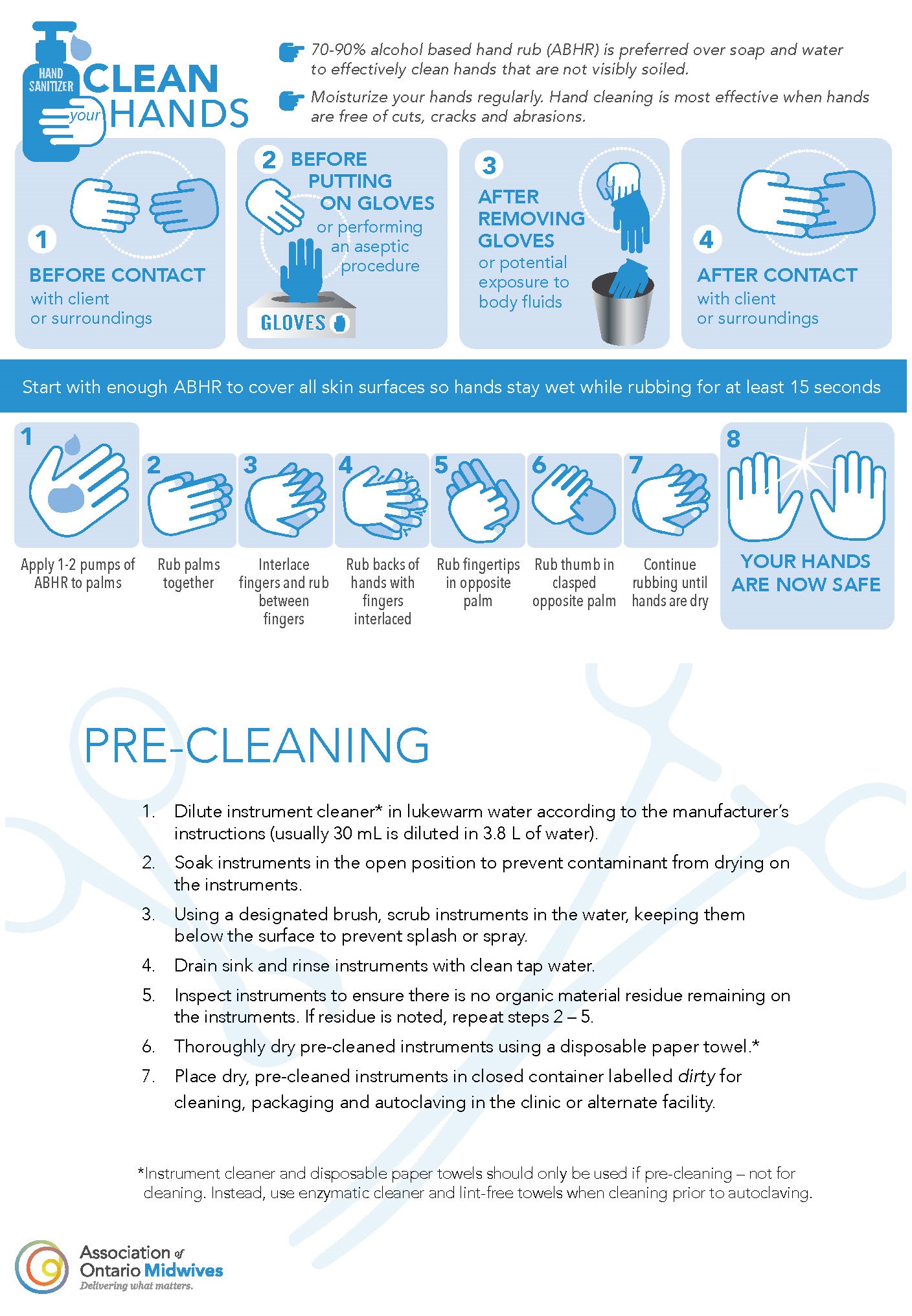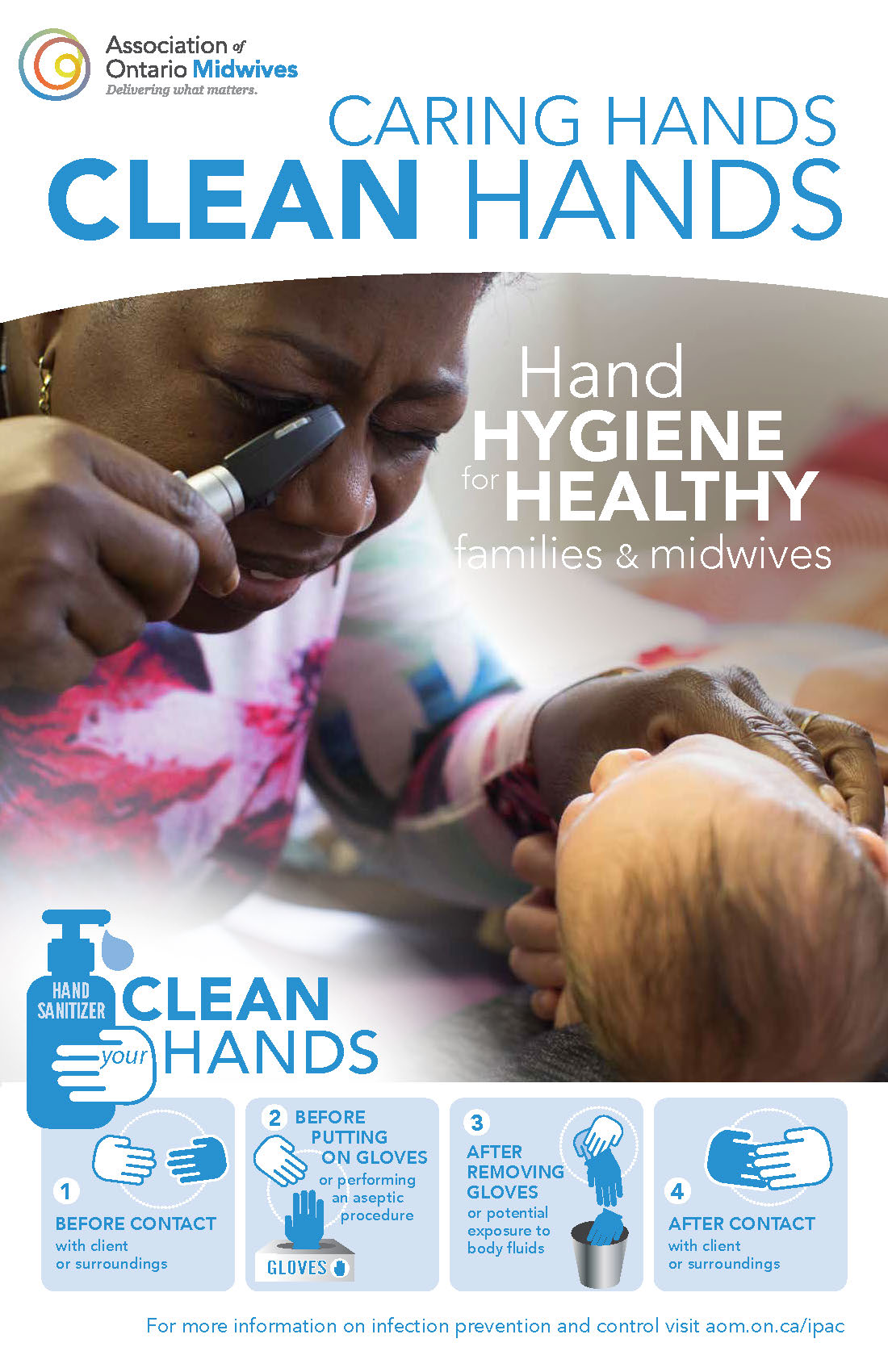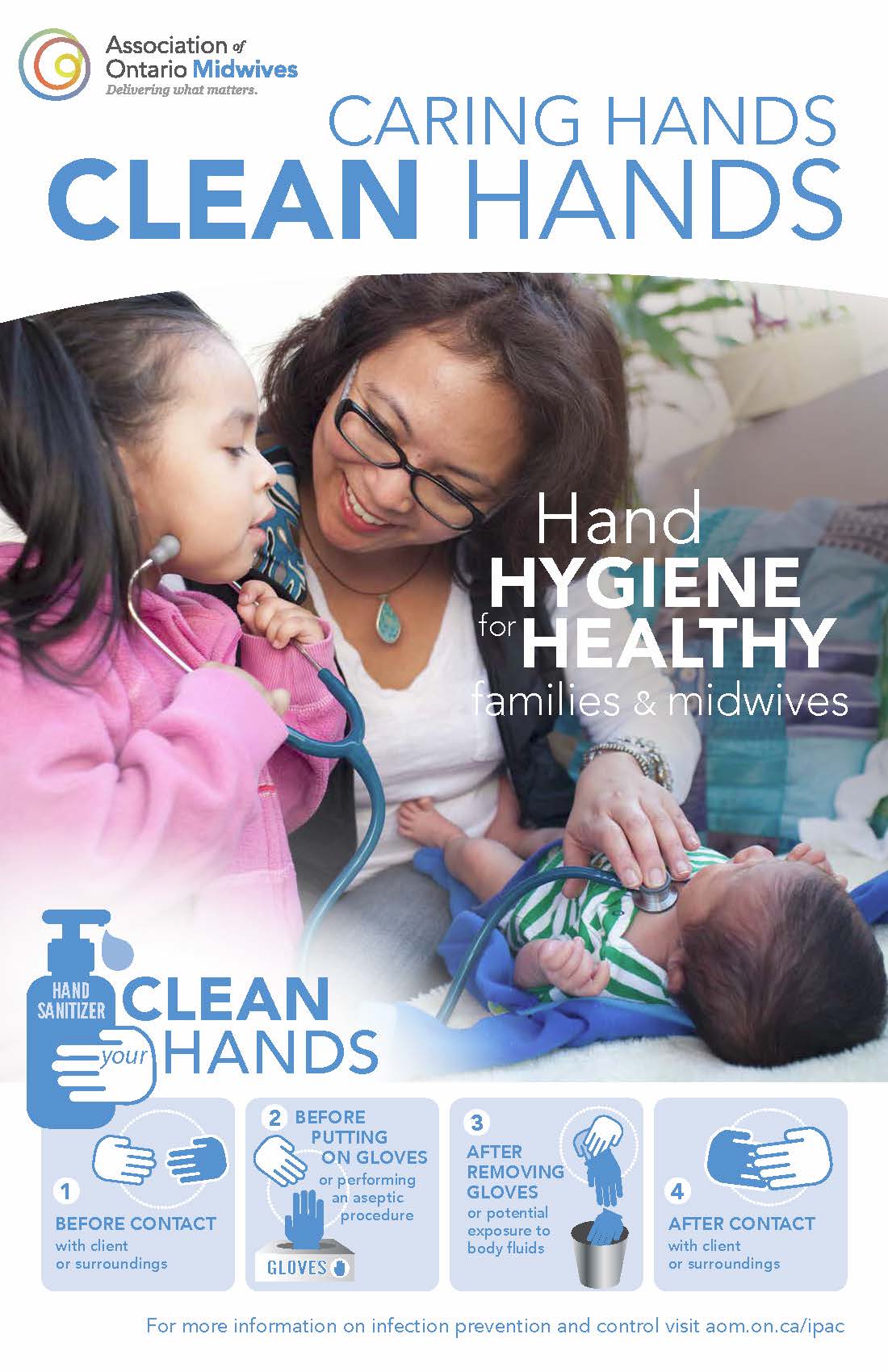Hand Hygiene
Tips for Clean Hands
- Use alcohol-based hand rub
- When hands are not visibly soiled, 70-90% alcohol based hand rub (ABHR) is more effective than washing your hands with soap and water (even when using an antibacterial soap) because ABHR
- requires less time to use; (1)
- significantly reduces bacterial contamination; (1, 2)
- rapidly kills most transient microorganisms as it is able to denature proteins; (1)
- is less irritating to skin; (1) and
- can be made readily accessible in different locations. (1)
-
For individuals with sensitivities or allergies to ethanol-based hand sanitizers, isopropanol-based product may be used as an alternative. Both ethanol and isopropanol have similar antimicrobial action; however, ethanol has greater antiviral action. (1)
-
Use antiseptic products only when required (i.e., for surgical hand scrub), otherwise use ABHR or plain soap and water for hand hygiene. Frequent use of antiseptic products (such as antimicrobial soap) may increase risk of antibacterial resistance. (1)
-
Handwashing with plain (non-antimicrobial) soap, can reduce transient flora counts on hands. However, some studies have found that plain soap may not remove pathogens from hands of health-care providers. (2)
- When hands are not visibly soiled, 70-90% alcohol based hand rub (ABHR) is more effective than washing your hands with soap and water (even when using an antibacterial soap) because ABHR
-
Clean your hands at the four moments of hand hygiene
-
Hand hygiene is recommended before and after a visit with clients, before and after having physical contact with clients, before and after putting on gloves, and after potential bodily fluid exposure. These are the four moments of hand hygiene.
-
Gloves are worn when you anticipate contact with mucous membranes, non-intact skin or body fluids. Ensure hands are clean and dry prior to wearing gloves and clean them after glove removal to prevent cross-contanimation. (1)
-
-
Remove harbours for bacteria
-
Hands can be cleaned more effectively when fingernails are short and clean.
-
Nail polish that has cracks or chips can harbour bacteria. If nail polish is worn by health-care providers, it should be fresh and free of cracks or chips.
-
Artificial nails and nail enhancements cause transfer of numerous microorganisms and yeast, inhibit effective hand hygiene, and may cause gloves to tear.
-
Rings may increase the number of microorganisms on hands and the risk of tears in gloves. A smooth band is less likely to increase these risks than a ring with projections or mounted stones.
-
Jewelry and watches around the wrist can harbor bacteria; it is a good idea to remove anything around your wrist, or push a watch up your arm, before performing hand hygiene and providing care to clients. (1)
-
-
Care for your hands
-
Hand hygiene is most effective when your hands are in good condition. Cuts, cracks or abrasions can harbor bacteria, so regularly use a moisturizer to help prevent this. (1)
-
Some people get a rash in response to certain products, such as ABHR or soaps. This rash, called “irritant contact dermatitis,” can increase shedding of skin cells and bacteria, potentially increasing the transmission of bacteria. To minimize irritant contact dermatitis, moisturize frequently and try various products until you find one that works best with your skin.
-
Do not use ABHR immediately after washing hands with soap and water as this will cause increased irritation. (1)
-
-
Encourage proper hand hygiene
-
Have unexpired, 70-90% ABHR available in each clinic room and client waiting area, along with hand moisturizing skin care products to maintain hand skin integrity. Carry ABHR in your car, prenatal and birth bags to continue practicing proper hand hygiene outside of the office.
-
Place ABHR away from sink areas to prevent people from thinking they need to use both products, or from using ABHR with water.
-
Implement strategies to encourage and remind midwives, staff, and clients to wash and sanitize their hands at appropriate times. For example
-
Place Just Clean Your Hands stickers on ABHR dispensers and How to Handrub posters near each ABHR dispenser.
-
Place How to Handwash posters above hand washing sinks for clients, midwives, staff and students to refer to.
-
Place the AOM’s hand hygiene posters around your clinic, e.g. in each clinic room and the client waiting area. These posters will serve as a reminder to perform hand hygiene, and might also trigger conversation with clients.
-
-
Use hand hygiene posters to orient new midwives, staff, students and volunteers to your practice group’s hand hygiene expectations.
-
Encourage clients to practice effective hand hygiene to protect themselves when discussing virus or bacterial transmission (e.g., when a parent or other family member is sick or during influenza season).
-
Template Hand Hygiene Protocol (found in Infection Prevention and Control section).
See also: Public Health Ontario, various resources related to hand hygiene, including pocket cards and videos.
References:
(1) Ontario Agency for Health Protection and Promotion (Public Health Ontario), Provincial Infectious Diseases Advisory Committee. Best Practices for Hand Hygiene in All Health Care Settings. 4th ed. Toronto, ON: Queen’s Printer for Ontario; 2014 April [cited 2016 January 29].
(2) Chow A, Chan O, Chan S, Poh B, Krishnan P, Ng W. et al.. Alcohol handrubbing and chlorhexidine handwashing protocols for routine hospital practice: a randomized clinical trial of protocol efficacy and time effectiveness. Am J Infect Control. 2012; 40(9), 800-805.




